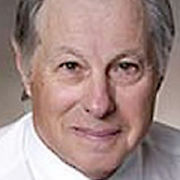I have had an exciting and interesting life in Cultural Psychiatry, both in being able to treat, and work with, patients from a variety of cultures, as well as to work with colleagues from around the world.
My first such experience was as a general physician in Vietnam, during the escalating Vietnam War. Treating the profoundly sick and wounded was a difficult and life-changing experience. This experience introduced me to the complexities of problems of war and refugees. Later, I worked with Aborigines in Malaysia and helped take care of isolated tribes throughout the Malaysian peninsula. This was a unique experience of providing medical treatment to unsophisticated and very reserved Aborigines, some of whom suffered from profound psychiatric disorders.
During my psychiatry residency training years, I worked with Jim Shore, doing an epidemiological study of an Indian village. Later, I returned to Malaysia to teach psychiatry at the new medical school in Kuala Lumpur. I worked with Eng Seong Tan, chairman of the Department of Psychological Medicine. While there, I wrote several articles on psychiatric disorders among the Aborigines, on cross-cultural psychiatry and on cross cultural psychotherapy; articles that stimulated my interest in cultural psychiatry and psychiatric problems in developing countries.
Later, I worked at the cross-cultural setting of the University of Hawaii Medical School, where I was able to treat patients from the many different cultures of Hawaii. This was also a very fruitful and enjoyable time, collaborating with colleagues Wen-Shing Tseng and Jing Hsu.
Since 1976, I have been a faculty member of the Department of Psychiatry at Oregon Health and Science University, where one of my first responsibilities was to develop an Intercultural Psychiatric Program. That program started by treating refugees from the Indo-China War. We used the model of an ethnic counselor teamed with a psychiatrist, to treat patients from a specific culture. Throughout much of this time, Jim Boehnlein and Paul Leung joined me and ten other psychiatrists, to accommodate refugees from sixteen different language groups.
The academic work has been very productive; involving cross-cultural psychotherapy, clinical treatment programs, development of the Vietnamese Depression Scale (with Spero Manson) and post traumatic stress disorder among the Cambodian concentration camp survivors. With Bill Sack, we were able to study the effects of massive trauma on Cambodian children, in a community epidemiological study. Specific work at this time involved testing blood levels of the patients. We found that blood levels of antidepressants indicated non-compliance. We also described the benefits of clonidine for PTSD, and of group therapy for traumatized refugees.
A side benefit of working with Paul Leung, Jim Boehnlein and Spero Manson was to restudy the same Indian village where we had done a field study 19 years previously. We found there was a remission rate of alcohol dependence of about 50% over that time.
More recently I have been involved in studying the psychological effects of the horrific events of September 11, 2001 on traumatized refugees, a great many of whom experienced a reactivation of symptoms; particularly among Muslim patients.
The Intercultural Psychiatric Program now has 1,200 patients, 10 psychiatrists and 18 counselors. It also has a component for child psychiatry. I personally have continued to treat patients from Cambodia, Somalia, Bosnia and Guatemala.
As I review my clinical life over the last 40 years, I have many fragmented memories that stand out. Like my patients, it is often difficult for me to put them in a coherent frame of reference.
There were the children dying of dehydration in Vietnam. One week I lost five children before we learned to adequately hydrate them. And then there was the indiscriminate killing of villagers, by who knows who, as they came into our hospital wounded. At one time, there were twenty dead piled up in our ward. There were the frightened soldiers who were shaking, angry, and with marked startle response. We diagnosed it as anxiety then, not yet having a PTSD diagnosis at that time.
In a remote aboriginal village there was a psychotic woman who was placed in a cage to prevent her aggressive outbursts. Her husband had to force his way in and give her food forcefully, accompanied by numerous personal threats and beatings; just to keep her alive. There was the young woman who seemed to have malaria – like everyone else in the hospital – only her fever didn’t go down; and it wasn’t until the day after she died that we were able to diagnose it as meningitis. There was the depressed Malay woman whose mother promised her wealth if she married a rich old man. Her story turned pathetically sad when he gambled away all the money and did not die.
There was a Chinese man whose relative was very ill. The local medicine man said that it was a very serious illness and that the only way to cure him was to kill a tiger and administer some of the tiger’s sperm to him. I think about another Chinese man, who had been a brilliant student in the US, who developed delusions and hallucinations that would not stop and, on his second attempt, committed suicide. And there was the civil rights worker in the US, who made many bus trips to the South during the era of racial segregation there, who frequently had to confront angry crowds and police taunting, and was left with a cruel anger simmering underneath, in all his interactions.
The stories of the Cambodians seemed to be similar, familiar and extremely distressing; starvation of children, murder of family members, torture, lack of medical treatment, and endless, meaningless, imposed physical labor. They came to us emotionally blunted and avoidant of almost all human emotions. There’s the Vietnamese woman who appeared very depressed because her husband was killed during the Vietnam war, except that when the interpreter was gone, she showed me the wounds caused by the time her husband had thrown boiling water over her. In fact, she was happy that he died, but unable to express it.
There was the tragedy in Somalia with random violence. It was difficult to know who was the enemy and who was a friend. A woman described running away with her daughter, both having wounds in their legs; looking back and seeing a locked house being set afire – and realizing her son was still inside. From all the wars, Cambodia, Bosnia and Somalia, the missing and unaccounted for continue to give distress to all those who survived. With the current forensic evaluations of bodies in Bosnia, many of those survivors have had to face the reality that their husbands and brothers have, indeed, been murdered, and the cherished fantasies of their returning are no longer tenable.
At these times, culture seems relatively unimportant. It is the human condition itself that is frustrating and unpredictable. For the psychiatrist, there is often nothing else to do except stay with the patients, listen to their stories, offer understanding, empathy and support. The contact between people of various cultures seems to be the healing element. It is in experiencing the joy of people getting well and the resilience of people overcoming trauma, that we, the treating personnel, find some of our most intense professional rewards.
For me, the psychiatric experience has been a very fruitful family affair. One son, Erik, who lived in Japan and speaks Japanese, is a psychiatrist in Charlotte, North Carolina. Another son, Mark, has joined me in the Department of Psychiatry at OHSU and is now leading a Torture Treatment Program. My wife, Cris Riley, has been an active collaborator in the research projects and many special programs. I am very happy to be associated with the Intercultural Psychiatric Program, to be able to work with patients from around the world. They have constantly brought me joy and amazement at the resiliency of the human spirit. It is a unique privilege and responsibility to share in the lives of traumatized refugees, and hopefully to reduce their suffering.
July 5, 2007

